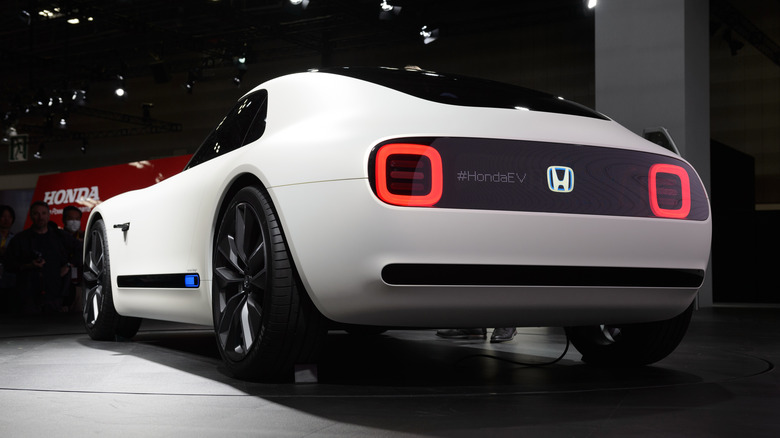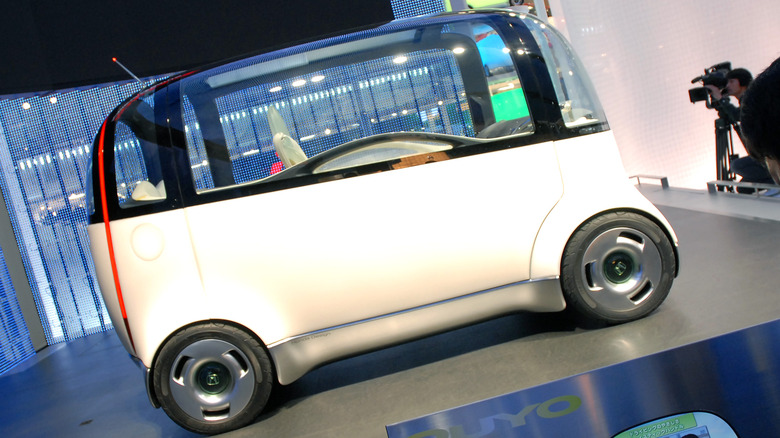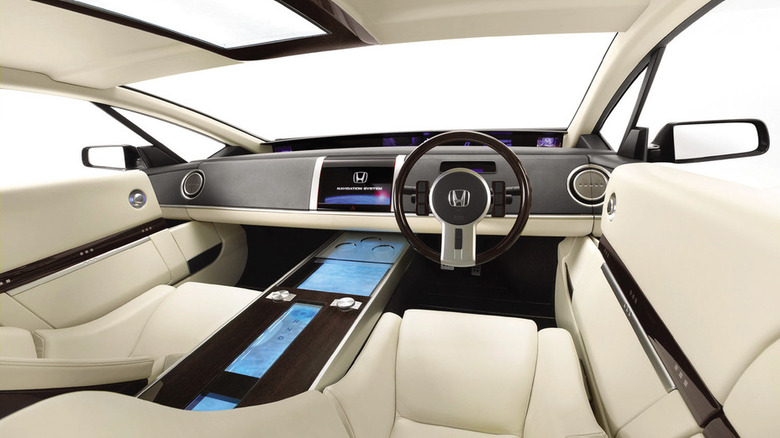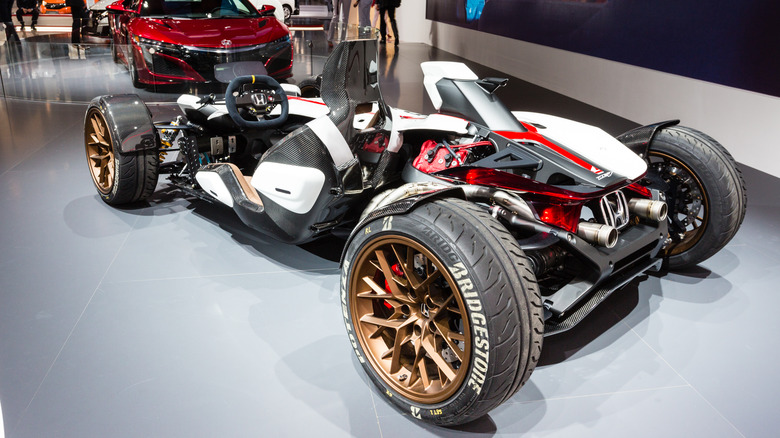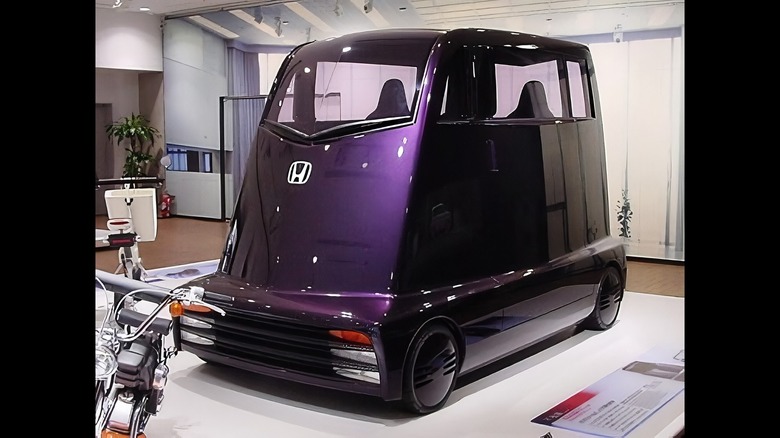5 Futuristic Honda Concept Cars That Never Made Production
Concept cars serve as glimpses into the future of transportation, often pushing the boundaries of creativity and technology, and Honda has a rich history of creating concept cars that offer compelling visions of what could be on the horizon. While some Honda concept cars have successfully made their way into production and onto the streets, like the Honda Urban EV concept, there are a handful that remain confined to the drawing board and showcase floors.
This collection of five futuristic Honda concept cars gives insight into the world of these captivating vehicles that, despite their promise and potential, never saw the light of day beyond the concept stage. It's also a window into Honda's futuristic visions for transportation and what the automotive industry thought was the future at the time. As we explore these cars, you'll discover the unique features, impressive specs, and the reasons why they remained in the realm of dreams rather than becoming a reality on the roads.
Honda Spocket
The 1999 Honda Spocket Concept, a brainchild of Honda R & D Americas, Inc., is a concept car that seamlessly transitions from a four-seater to a two-seater convertible, showcasing a futuristic aesthetic with angular bodywork, tilt-up doors, and a red over gray color scheme. The interior features weather-resistant bucket seats, a waterproof design, and advanced technologies like Honda's GPS Navigation system.
Crafted in eight months, the Spocket inherits its DNA from the T360, Honda's first mass-produced vehicle. Its four-wheel-drive system combines a hybrid gasoline-electric engine for the front wheels and two in-wheel electric motors for the rear, delivering a full-time four-wheel drive. The semi-automatic, five-speed transmission with steering wheel-mounted shift buttons adds a sporty touch to the driving experience.
The absence of traditional side view mirrors is compensated by cameras projecting rear images onto a heads-up display on the front windshield. The Spocket also caters to an active lifestyle, accommodating sports gear while maintaining its sporty performance.
However, despite its promising features, the Honda Spocket never saw the light of production. The vehicle, a fusion of convertible, pickup, and sports car elements, remained a concept, leaving enthusiasts to wonder about the possibilities it could have brought to the automotive landscape. Perhaps the Spocket was ahead of its time, its avant-garde features not finding a place in the practicalities.
Honda Puyo
The Honda Puyo, introduced at the Tokyo Auto Show, was a concept car built around the concept of "softness," featuring a luminescent, box-shaped exterior body made of soft materials, which aimed to provide a silky and tactile appeal. The name "Puyo" was chosen to reflect the warm and friendly impression the car was designed to convey, emphasizing clean, safe, and eco-friendly functionality.
One of the notable features of the Honda Puyo was its unconventional design. The exterior aimed for a "seamless soft box" look, according to Car and Driver, eliminating sharp corners and focusing on creating a spacious and safe driving experience. The glow-in-the-dark body gave the car an uncommon visual identity. It served a functional purpose by guiding the driver and enhancing the connection between the car and its operator.
Inside, the Puyo adopts a silky design, creating a transparent and user-friendly space. Innovative features included a luminous fluid meter display and an intuitive joystick. In terms of performance, the Honda Puyo was powered by a hydrogen fuel cell, aligning with Honda's commitment to eco-friendliness and sustainable mobility. This fuel source could be produced using clean energy sources like solar, water, or wind power.
Unfortunately, the car never made it to market — various factors can contribute, including cost, technological feasibility, and market demand. The gel body and design features of the Puyo might have posed challenges in mass production and safety regulations.
Honda Kiwami
The Honda Kiwami, unveiled as a concept car at the 2003 Tokyo Motor Show, offered a glimpse into an environmentally conscious vision of luxury sedans. This wedge-shaped sedan was designed primarily for the Japanese market, and it was a standout concept during a time when there was a growing interest in hydrogen-powered vehicles.
One of the most striking features of the Kiwami was its powertrain. It utilized a hydrogen power plant with an ultracapacitor, a fuel cell stack, a hydrogen storage unit, and a control unit. These components were integrated into a "skateboard" chassis beneath the vehicle. This design maximized interior space that was characterized by a clean and elegant aesthetic inspired by Japanese garden design.
At its unveiling, hydrogen-powered vehicles were gaining attention, but the infrastructure required for hydrogen refueling was a significant challenge. In contrast, electric vehicle technology was advancing rapidly, and battery-powered EVs were becoming more practical and accessible. This shift in the automotive landscape made it difficult for the Kiwami's hydrogen concept to gain traction. It might have better luck on its second go since Honda is planning a new hydrogen-powered car co-developed with General Motors.
Honda Project 2+4
The Honda Project 2&4 is an intriguing concept car that marries the world of motorcycles and automobiles. Project 2&4 was inspired by Honda's rich racing heritage and made its debut at the 2015 Frankfurt Motor Show.
A key feature of the Honda Project 2&4 is its powertrain, like the Kiwami, but for more traditional reasons. Under the hood, the car houses a 999cc V4 engine, packing a punch with 212 horsepower and 87 pound-foot of torque. The design of the Project 2&4 also stands out. It's compact and lightweight, drawing inspiration from 1960s Formula One cars and the Honda RA272 in particular. However, the concept raised some eyebrows regarding safety due to its "floating seat" interior, which might not meet the stringent safety regulations for production vehicles.
Despite its impressive specs and unique design, the Honda Project 2&4 never made it into production. Honda does not explicitly state the reasons behind this decision, but it's common for concept cars like this to remain in the prototype stage due to various practical challenges. For the 2&4, there might have been cost considerations, regulatory hurdles, and the need to make adjustments for mass production.
Honda Fuya-Jo
The Honda Fuya-Jo, a concept car introduced in 1999, represents an attempt by Honda to cater to partygoers and the youth market. The Fuya-Jo, part of Honda's F-Mover series, was designed for all-night city cruising while providing an "entertainment experience." It was notably distinct from traditional car designs and aimed to blend both entertainment and transportation.
The Fuya-Jo's innovative interior features tall stool-like seats, which allow for dancing and semi-leaning, giving it the feel of a nightclub on wheels. The dashboard is inspired by a DJ mixing desk, creating an interactive space for occupants. The flat floor design also adds to this design, allowing standing occupants the sensation of skateboarding or rollerblading within the vehicle. The exterior of the Fuya-Jo looks futuristic, with a design that could be likened to something out of a science fiction movie.
While the Fuya-Jo was a daring attempt to test the preferences of the youth market in the automotive industry, its unconventional design may have been a hindrance to its practicality for mass production.
